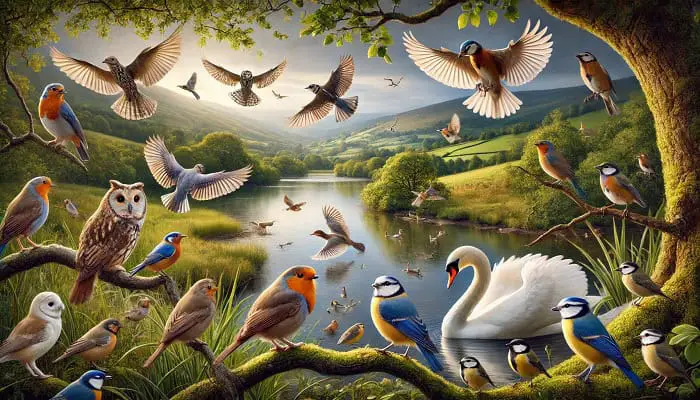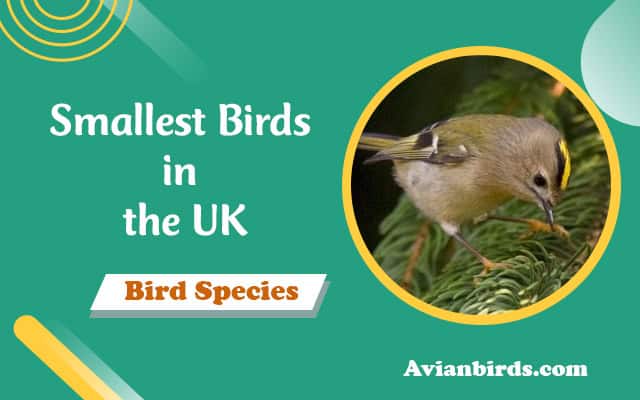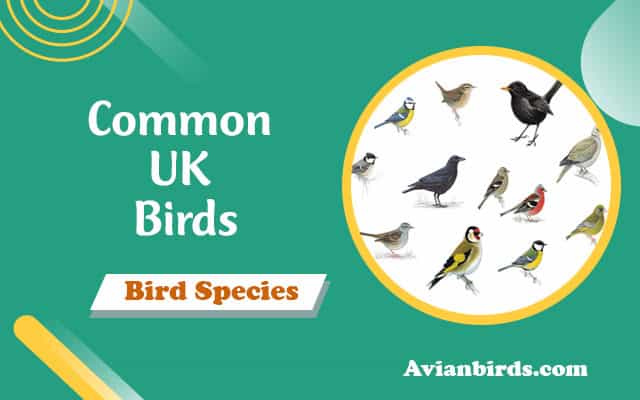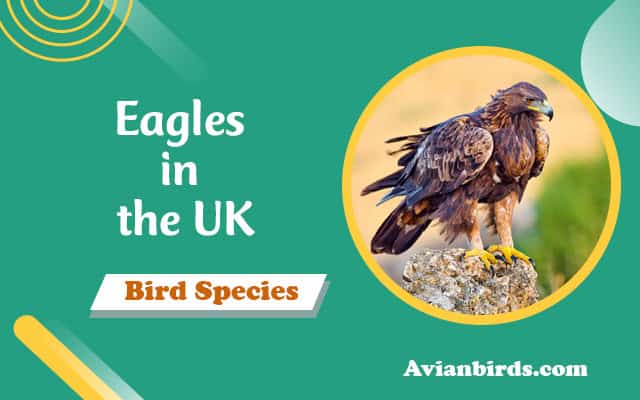15 Types of Finches in the UK (ID Guide With Pictures)
Do you know of over 15 finchs species that breed in the UK? This shows how diverse finches are in our area. We’ll explore the world of finches in the UK together. You’ll learn how to spot these birds, their appearance, and where they live.
We’ll look at birds like the Hawfinch and the Goldfinch. Each finch has its own story to tell about its home. Whether you love birds or are just curious, come along and discover finches in the UK.
Introduction to Finches in the UK
Finches are small to medium-sized birds in the family Fringillidae. The UK has over 15 types of finches. These birds are loved for their bright colours and sweet songs.
Watching finches in the UK is a favourite pastime for many. Knowing about each finch species helps us appreciate them more.
The European Goldfinch has 1.5 to 1.7 million birds. The Chaffinch has around 6.2 million. Greenfinches have 1 to 1.5 million. But, the Linnet has sadly lost over 50% of its population in 50 years.
Each finch species is vital to our ecosystem. They live in different places across the UK. Watching them shows us the importance of nature.
Exploring UK finches helps us understand their homes, how they eat, and how we protect them. This journey shows us how special and important finches are to our environment.
What Are Finches? An Overview
Finches are small, colourful birds found in many places in the UK. They belong to the Fringillidae family. This family includes many species known for their bright colours and special behaviours.
Learning about finches and where they like to live helps us appreciate them more.
Finches’ Characteristics and Behavior
Finches in the UK have short, triangular beaks. These beaks are perfect for eating seeds. They eat different things in different places.
Finches like to be together. They often fly and feed in groups. Each finch species is different, showing how they adapt to their surroundings.
Habitat Preferences of Finches
Finches live in many places in the UK, like woodlands, cities, and farms. Each species likes different places. Some like thick bushes for nesting, while others prefer open fields for finding food.
Common Finch Species in the UK
In our exploration of UK finch species, we find many common finches in our gardens and woodlands. Each species has its own charm and character. Knowing their breeding populations and how to identify them is important.
This knowledge makes birdwatching more fun and helps us appreciate nature more.
Overview of Breeding Populations
Many common finches in the UK have stable or declining populations. This shows how adaptable they are and the challenges they face. For example:
- Chaffinch (Fringilla coelebs) is very common and is seen in both rural and urban areas.
- Greenfinch (Chloris chloris) has declined, mainly due to trichomoniasis.
- Siskin (Spinus spinus) likes conifer woodlands but also visits gardens when seeds are scarce.
- Goldfinch (Carduelis carduelis) is everywhere, making gardens beautiful for bird lovers.
- Bullfinch (Pyrrhula pyrrhula) is often seen in pairs, adding colour to woodlands.
- Brambling (Fringilla montifringilla) shows up in cold months, especially in beech woodlands.
- Hawfinch (Coccothraustes coccothraustes) is rare but found in hornbeam woodlands.
- Lesser Redpoll (Acanthis cabaret) loves birch and alder woodlands for food.
- Linnet (Linaria cannabina) is stable in lowland farmlands.
- Twite (Carduelis flavirostris) breeds in Scotland and beyond, showing great adaptability.
- Common Crossbill (Loxia curvirostra) has a stable population, but the Scottish one is rarer.
Identifying Common Finch Species
Learning to identify finches is rewarding for birdwatchers. Key traits help us tell them apart:
| Species | Coloration | Habitat | Population Status |
|---|---|---|---|
| Chaffinch | Pale blue and reddish-brown | Gardens, woodlands | Stable |
| Greenfinch | Green and yellow | Urban areas, gardens | Declining |
| Siskin | Yellow streaked with black | Woodlands, gardens | Stable |
| Goldfinch | Bright yellow and black | Gardens, parks | Stable |
| Bullfinch | Red and black | Woodlands, large gardens | Stable |
| Brambling | Black with a white belly | Beech woodlands | Stable |
| Hawfinch | Brown and chestnut | Hornbeam woodlands | Declining |
| Lesser Redpoll | Brown and red | Birch, alder woodlands | Stable |
| Linnet | Brown with hazel | Lowland farmland | Stable |
| Twite | Brown with yellowish coloring | Uplands and coastal areas | Declining |
| Common Crossbill | Rosy red and grey | Conifer woodlands | Stable |
Knowing these traits helps us identify finches and enjoy birdwatching more. By recognizing these common finches, we can appreciate their behaviour in the wild.
Detailed Profiles of 14 Types of Finches in the UK
We will look at different finch species found in the UK. Each profile will cover their looks, where they live, songs, what they eat, and if they need help. This guide aims to help bird lovers and nature fans identify finches.
1. Hawfinch
- Scientific Name: Coccothraustes coccothraustes
- Size: 18-20 cm
- Weight: 40-50 grams
- Lifespan: Up to 10 years
- Diet: Seeds, fruits, insects.
The Hawfinch is the biggest finch in the UK. It has a strong bill and striking face. You can find it in woodlands and parks, known for its sharp call.

2. Goldfinch
- Scientific Name: Spinus tristis
- Size: 11-12 cm
- Weight: 15-20 grams
- Lifespan: 3-6 years
- Diet: Seeds (especially from thistles), fruits, and insects.
Goldfinches are loved for their bright yellow and song. They like thistle and dandelion seeds. They add color to gardens.
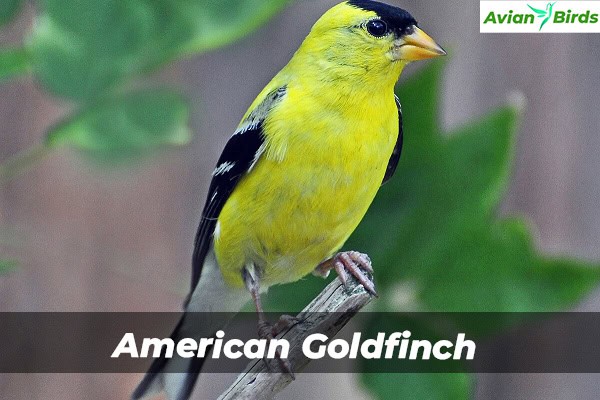
3. Bullfinch
- Scientific Name: Pyrrhula pyrrhula
- Size: 14-16 cm
- Weight: 18-30 grams
- Lifespan: 2-6 years
- Diet: Seeds, buds, berries, and fruits
Bullfinches have stunning looks, especially the males. They live in woods and are quiet. They eat fruit buds and seeds.
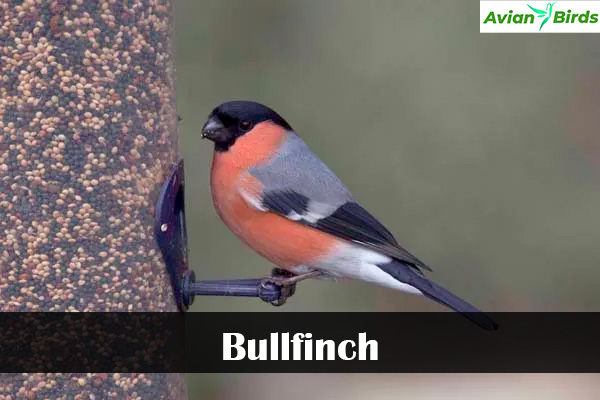
4. Greenfinch
- Scientific Name: Chloris chloris
- Size: 14-16 cm
- Weight: 25-30 grams
- Lifespan: 3-7 years
- Diet: Seeds, fruits, and buds.
Greenfinches are friendly and live in groups. They have olive-green feathers. They sing cheerfully in gardens and parks.
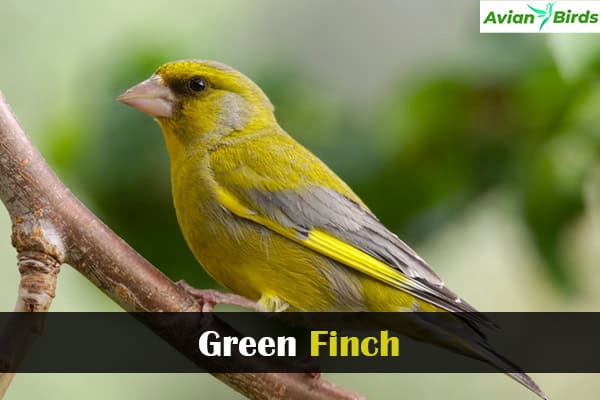
5. Chaffinch
- Scientific Name: Fringilla coelebs
- Size: 14-16 cm
- Weight: 16-25 grams
- Lifespan: 2-5 years
- Diet: Seeds, buds, and insects.
The Chaffinch is a common garden bird. It has bright colors and sings a lot. It lives in many places, eating seeds and bugs.

6. Linnet
- Scientific Name: Linaria cannabina
- Size: 13-14 cm
- Weight: 15-20 grams
- Lifespan: 2-5 years
- Diet: Seeds, particularly from plants like thistles, and some insects.
Linnets are small and sing beautifully. They live in scrubby areas and farmland. They eat seeds and flowers.
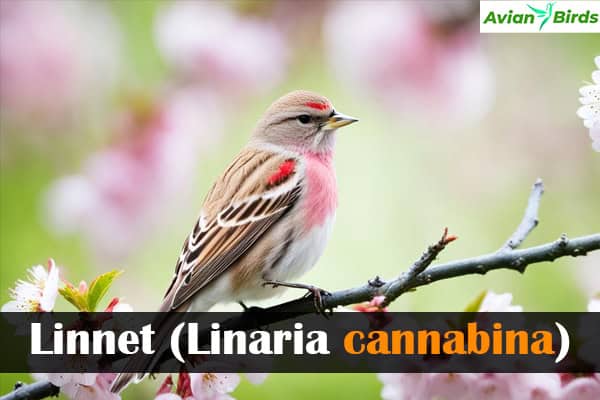
7. Siskin
- Scientific Name: Spinus spinus
- Size: 11-12 cm
- Weight: 15-20 grams
- Lifespan: 2-5 years
- Diet: Seeds, especially from conifers and weeds, and some insects.
Siskins are lively and found in conifers. They have yellow and black feathers. They eat seeds from conifer cones.

8,9. Common Redpoll and Lesser Redpoll
These finches have red crowns and streaked feathers. Common Redpolls like weedy fields, while Lesser Redpolls prefer woods. They both like seeds.
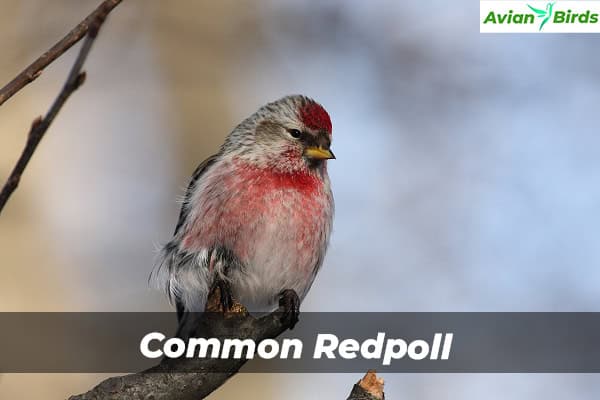
10. Twite
- Scientific Name: Carduelis flavirostris
- Size: 13-14 cm
- Weight: 15-20 grams
- Lifespan: 2-4 years
- Diet: Seeds (especially from grasses and wildflowers), and some insects.
Twites live in coastal areas and grasslands. They are hard to see, but their calls are distinctive. They eat seeds.
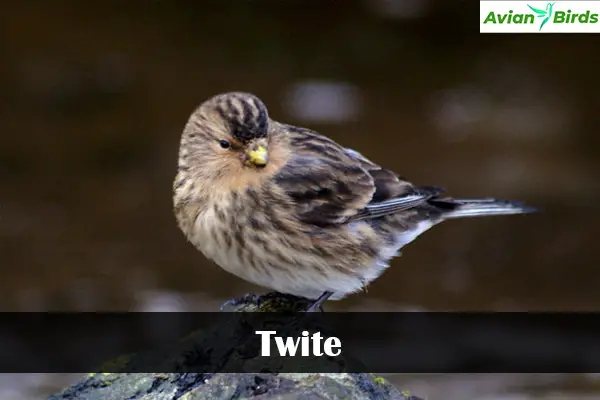
11. Brambling
- Scientific Name: Fringilla montifringilla
- Size: 14-16 cm
- Weight: 18-25 grams
- Lifespan: 2-6 years
- Diet: Seeds, nuts, berries, and insects.
Bramblings visit in winter with their orange-brown feathers. They eat seeds in gardens and parks. They are a challenge to spot.
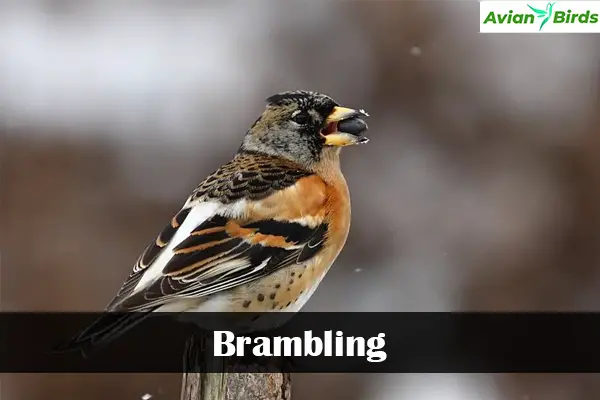
12,13 .Common Crossbill and Parrot Crossbill
Common Crossbills have crossed bills for seed-eating. They live in forests. Parrot Crossbills have stronger bills and are bigger.
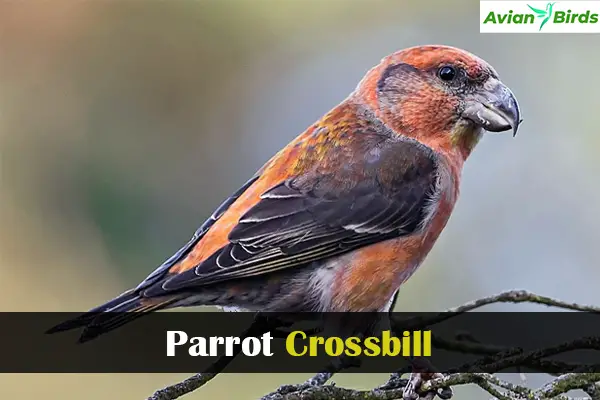
14. Serin
- Scientific Name: Serinus serinus
- Size: 11-12 cm
- Weight: 12-20 grams
- Lifespan: 3-6 years
- Diet: Seeds (especially from grasses and herbs) and some insect
Serins are rare in the UK. They are golden-yellow and sing cheerfully. They are found in gardens and farmland.
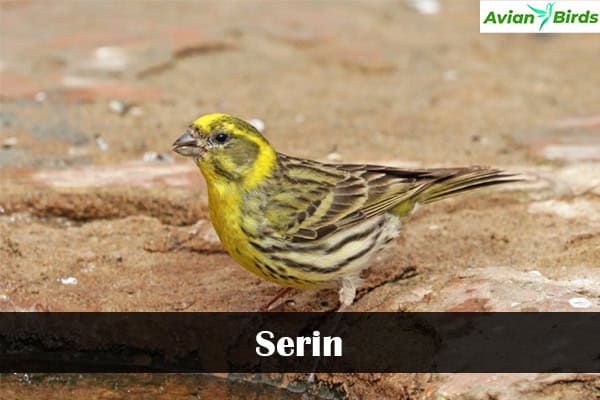
15. Common Rosefinch
- Scientific Name: Carpodacus erythrinus
- Size: 14-16 cm
- Weight: 18-30 grams
- Lifespan: 3-5 years
- Diet: Seeds, fruits, and insects.
The Common Rosefinch travels a lot. Males are very colorful. They are hard to find but exciting for birdwatchers.

Where to See Finches in the UK
Looking for finches in the UK? Some places are better than others. These spots have lots of finches, perfect for watching. Local gardens, parks, and nature reserves are great for seeing these birds up close.
Identifying Regions with High Finch Populations
Some areas are better for finches because of their good conditions. Here are places where you might see different finch species:
- Yorkshire: Known for the House Finch sightings, particularly around Methley.
- Scottish Highlands: Often attracts Greenfinches and other species.
- Lake District: A habitat where we can see Bullfinches and Siskins.
- Coastal Areas: Popular for spotting seabirds and occasional Finch species.
Bird feeders can help us see more finches. Even if a garden doesn’t have finches, nearby trees might show signs of them. Making feeders near cover can attract more birds.
Best Seasons for Finch Watching
When we visit can make a big difference. Here’s when it’s best to see finches:
| Season | Finch Activity |
|---|---|
| Spring | Breeding season; young finches begin exploring. |
| Summer | Increased sightings as they collect food for chicks. |
| Autumn | Flocks become more noticeable as birds gather for migration. |
| Winter | Good time for spotting finches at feeders; migration brings variety. |
Early mornings are the best for seeing finches. They are most active then. Seeing a flock, especially Greenfinches, means your garden might soon have them too.
Finch Migration Patterns in the UK
Finch migration patterns in the UK show us how these birds move with the seasons. They face many challenges on their journeys. We’ll look at how climate affects their travels and habits.
Understanding Migration Behavior
Finches in the UK migrate every year with the seasons. Some go south to warmer places in winter. About 50 bird species in the UK move for better weather, showing how important good environments are for them.
The common greenfinch’s numbers have dropped, which might change how it migrates.
Impact of Climate on Finch Migration
Climate changes a lot for finches, affecting their migrations. Changes in weather and food have made them leave earlier. This can be dangerous, especially with more buildings and less natural places to rest.
Studying finches helps us see how climate change affects them. It shows how important a stable environment is for their survival.
| Finch Species | Migration Characteristics | Climate Impact Observed |
|---|---|---|
| Greenfinch | Declining numbers; irregular migration | Shifts in timing; habitat loss increasing |
| Chaffinch | Seasonal migrants; flight distances vary | Climate-induced changes affecting food sources |
| Goldfinch | Some migrate; others remain year-round | Increased competition for resources |
Attracting Finches to Your Garden in the UK
Welcoming finches into our gardens is a joy. By knowing what finches like to eat and creating welcoming spaces, we can make our gardens finch-friendly. Let’s look at ways to attract finches and make our gardens a haven for them.
Feeding Preferences of Various Finch Species
Finches have certain food likes that we can meet. For instance, fresh nyger (thistle) seed is a hit with UK finches. It’s smart to buy seeds often and store any extra in the freezer to keep them fresh. Old, dry seeds won’t do.
Sunflower hearts are also a treat for finches, thanks to their high fat content. Keeping these foods available can bring many finches to our gardens, especially goldfinches and chaffinches.
| Food Type | Preferred Finch Species |
|---|---|
| Nyger Seed | Goldfinches, Chaffinches, Greenfinches |
| Sunflower Hearts | Goldfinches, Siskins, Chaffinches |
| Black Oil Sunflower Seed | Various Finches |
| Suet Balls | Robins, Blue Tits |
| Peanuts | Finches, Tits |
Creating Finch-Friendly Environments
We can make our gardens more finch-friendly in ways beyond food. Bright colors attract finches, as they love vibrant hues not found in nature. Keeping feeders clean is key. Dirty feeders scare finches away.
Having many feeding spots helps different birds visit, including finches. Water is also important. Fresh, shallow water lets finches drink and bathe, making them feel welcome.
Planting bird-friendly plants like hawthorn and sunflowers adds to the appeal. It also provides food and shelter. Nesting boxes give finches safe places to nest, helping their numbers grow in our gardens.
Conservation Efforts for Finches in the UK
Finches in the UK face many challenges. These problems threaten their homes and how they live. But, many groups are working hard to save these birds.
Challenges Facing Finch Populations
Finches in the UK are up against many dangers. These dangers include:
- Habitat loss due to urbanization and agricultural expansion
- Climate change, which alters migration patterns and available food sources
- Predation by invasive species, like cats and rats
- Changes in food availability linked to environmental fluctuations
These problems need quick solutions to save finches for the future.
Organizations Involved in Finch Conservation
Many groups are fighting to save finches in the UK. They work on keeping habitats safe, breeding programs, and getting people involved. Some key groups are:
- RSPB (Royal Society for the Protection of Birds) – Focuses on policy-driven conservation and habitat restoration.
- British Trust for Ornithology – Engages in research and monitoring of bird populations, including finches.
- Wildlife Trusts – Advocates for the protection of local wildlife and habitats where finches thrive.
Together, these groups are making a big difference. They are working hard to save finches for future generations.
| Conservation Actions | Description |
|---|---|
| Habitat Restoration | Rehabilitating and protecting the natural habitats of finches to promote population growth. |
| Public Awareness Campaigns | Informing communities about the importance of finch conservation and how they can help. |
| Research and Monitoring | Conducting studies to assess finch populations and the effectiveness of conservation measures. |
| Community Involvement | Encouraging local communities to participate in conservation activities through volunteer programs. |
Conclusion
Finches in the UK are very important to our natural world. They come in 14 different kinds, each with its own colors and ways of acting. Watching these birds helps us love wildlife more and understand their importance.
But, finches are facing big problems. Their numbers are going down, especially in cities. This shows we need to act fast to save them. By joining in conservation efforts, we can ensure finches will still be around for others to see and love.
Learning more about finches and their struggles helps us help them. Let’s all work together to celebrate the variety of finches in the UK. And let’s enjoy the happiness they bring to our lives.



